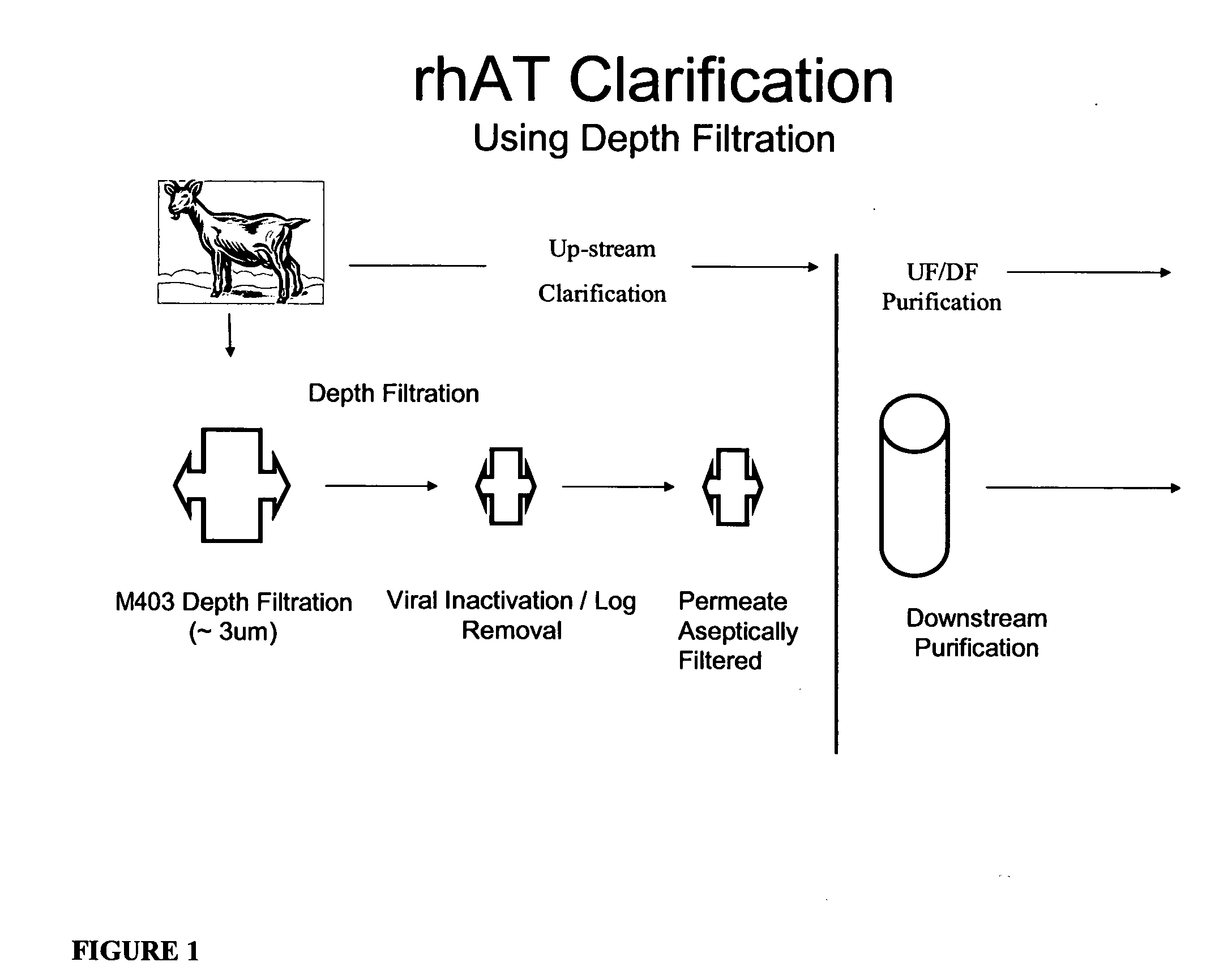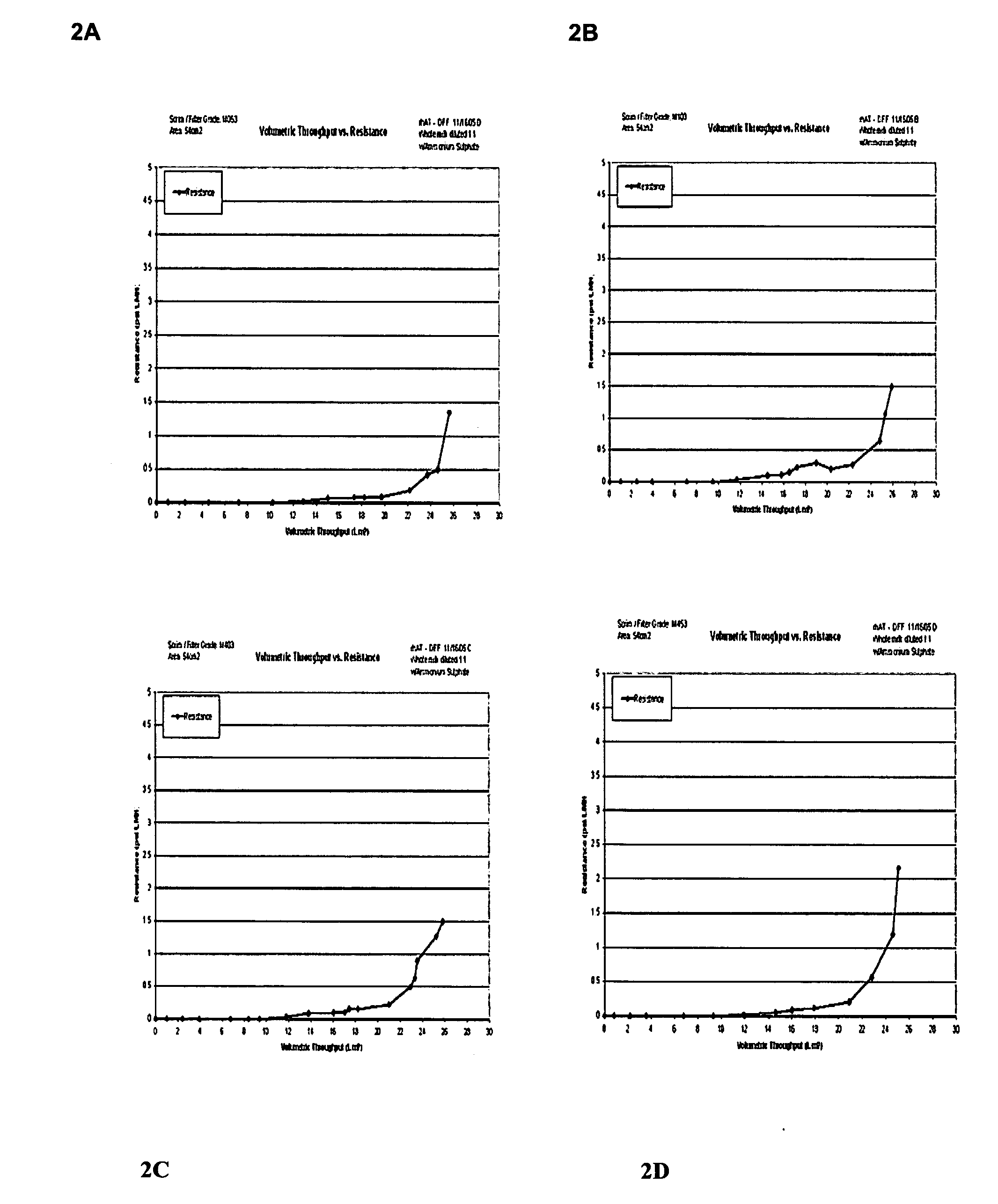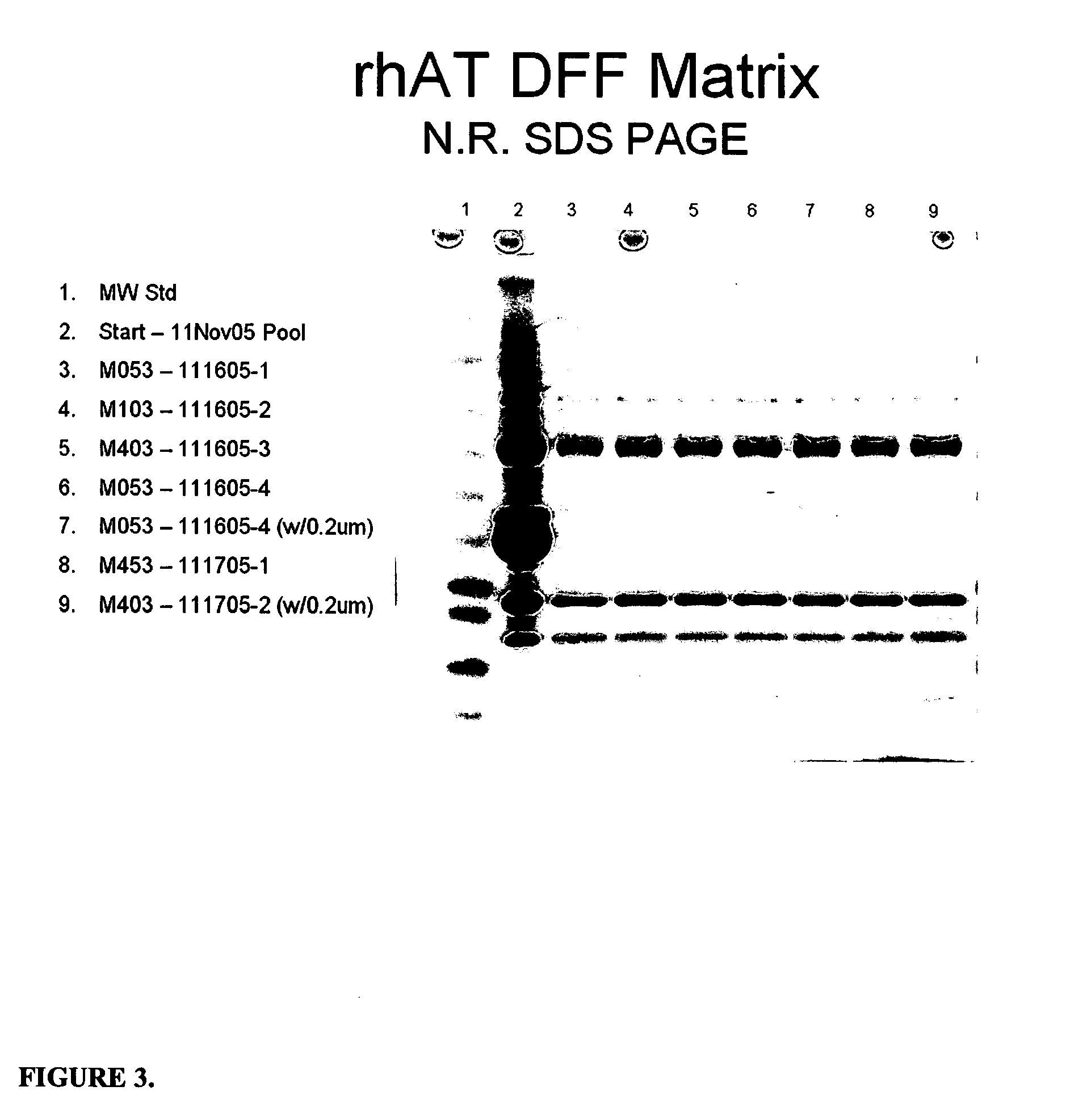Clarification of transgenic milk using depth filtration
a technology of transgenic milk and depth filtration, which is applied in the direction of peptide/protein ingredients, immunoglobulins, peptides, etc., can solve the problems of less or aberrant biological activity, complex problems, and imposed product requirements, so as to improve the separation efficiency of proteins, enhance the effect of such filtering activity, and enhance the clarification and fractionation of proteins
- Summary
- Abstract
- Description
- Claims
- Application Information
AI Technical Summary
Benefits of technology
Problems solved by technology
Method used
Image
Examples
Embodiment Construction
[0038] The following abbreviations have designated meanings in the specification:
Abbreviation Key:
[0039] BSA Bovine Serum Albumin [0040] CHO Chinese Hamster Ovary cells [0041] CV Crossflow Velocity [0042] DF Depth Filtration [0043] DV Diafiltration Volume [0044] IEF Isoelectric Focusing [0045] GMH Mass Flux (grams / m2 / hour)—also JM [0046] LMH Liquid Flux (liters / m2 / hour)—also JL [0047] LPM Liters Per Minute [0048] M Molar [0049] MF Microfiltration [0050] NMWCO Nominal Molecular Weight Cut Off [0051] NWP Normalized Water Permeability [0052] PES Poly(ether)-sulfone [0053] pH A term used to describe the hydrogen-ion activity of a chemical or compound according to well-known scientific parameters. [0054] PPM Parts Per Million [0055] SDS-PAGE SDS (sodium dodecyl sulfate) Poly-Acrylamide Gel electrophoresis [0056] SEC Size Exclusion Chromatography [0057] TFF Tangential Flow Filtration [0058] PEG Polyethylene glycol [0059] TMP Transmembrane Pressure [0060] UF Ultrafiltration
Explanation...
PUM
| Property | Measurement | Unit |
|---|---|---|
| Temperature | aaaaa | aaaaa |
| Temperature | aaaaa | aaaaa |
| Temperature | aaaaa | aaaaa |
Abstract
Description
Claims
Application Information
 Login to View More
Login to View More - R&D
- Intellectual Property
- Life Sciences
- Materials
- Tech Scout
- Unparalleled Data Quality
- Higher Quality Content
- 60% Fewer Hallucinations
Browse by: Latest US Patents, China's latest patents, Technical Efficacy Thesaurus, Application Domain, Technology Topic, Popular Technical Reports.
© 2025 PatSnap. All rights reserved.Legal|Privacy policy|Modern Slavery Act Transparency Statement|Sitemap|About US| Contact US: help@patsnap.com



